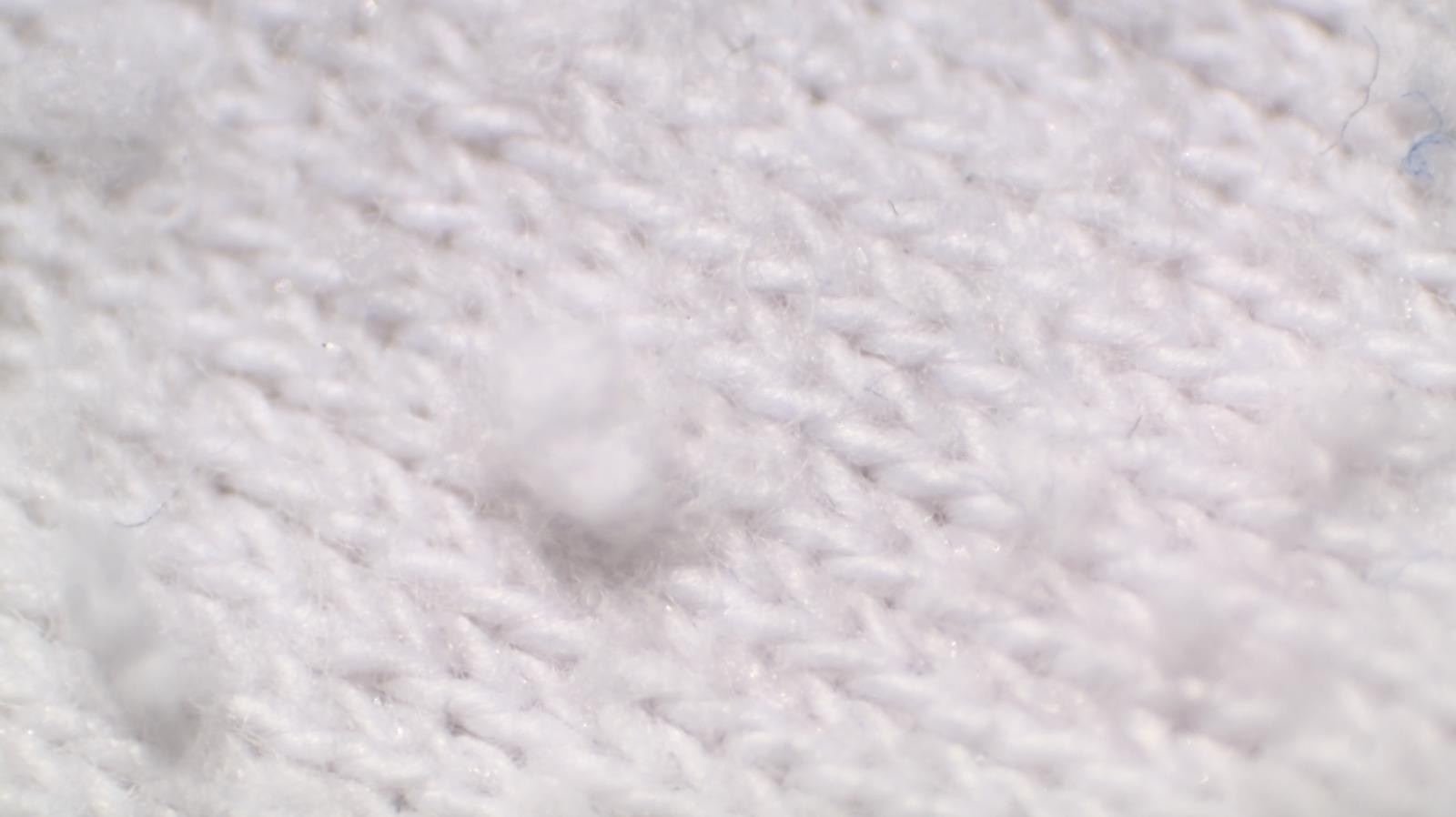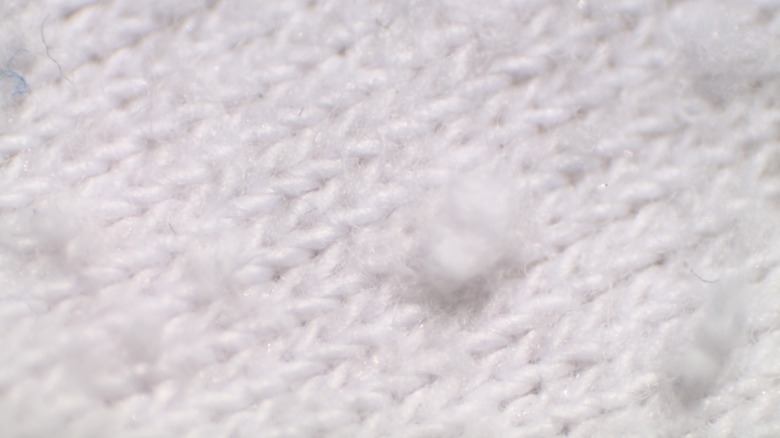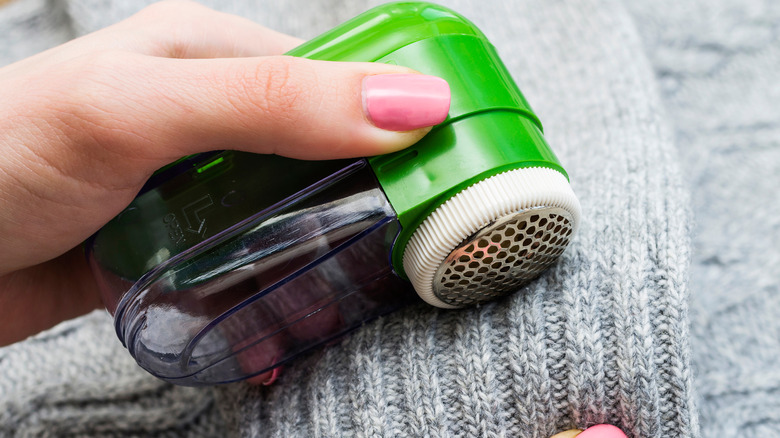The excitement of picking up a gorgeous new sweater can be quickly dampened by one thing — finding annoying little fuzz balls covering it after just a few wears. Like it or not, pilling seems to be an inevitable part of the normal wear and tear that clothes goes through.
Pilling happens when a fabric’s short fiber threads are rubbed against and get tangled (think, friction under the arms, or where you usually wear your crossbody bag), causing the tiny fuzz balls. Fabrics with shorter fibers, like cotton, or with mixed fibers, are more likely to pill than long-fiber materials, like silk (via Good Housekeeping).
Don’t worry though – there are easy ways to reduce or prevent pilling. First, wash clothes inside out. Friction caused by rubbing against something else is what causes pilling, so turning clothes inside out to wash instantly reduces that. Sean Cormier, an assistant professor at the Fashion Institute of Technology, says “[As] the washing machine goes back and forth — (the garment) is rubbing against other articles of clothing. If you wash something inside out, the face of the fabric won’t be abraded as much and pills will show up mostly on the backside” (via Today).
Battery-operated fuzz removers work well
Alternately, hand wash and line dry items that are prone to pilling.
Despite your best efforts, it’s likely that eventually, a favorite sweater will wind up with some pilling on it after all. What to do then?
Battery-operated fuzz removers are affordable, easy to use, and very effective. Fine-toothed sweater combs, which are basically just manual versions of fuzz removers, also work well. Finally, for a really low-tech option, simple razors – like the kind you’d use for shaving your legs – are effective. Just lay the sweater out on a flat surface, pull the fabric until it’s taut, and gently run the razor over the area that’s pilling. Then, use a lint roller or a section of duct tape to grab any remaining fuzz balls from the sweater (via Who What Wear).
In just a few minutes, your sweater will go from looking worn, to good-as-new!
Source: Read Full Article


